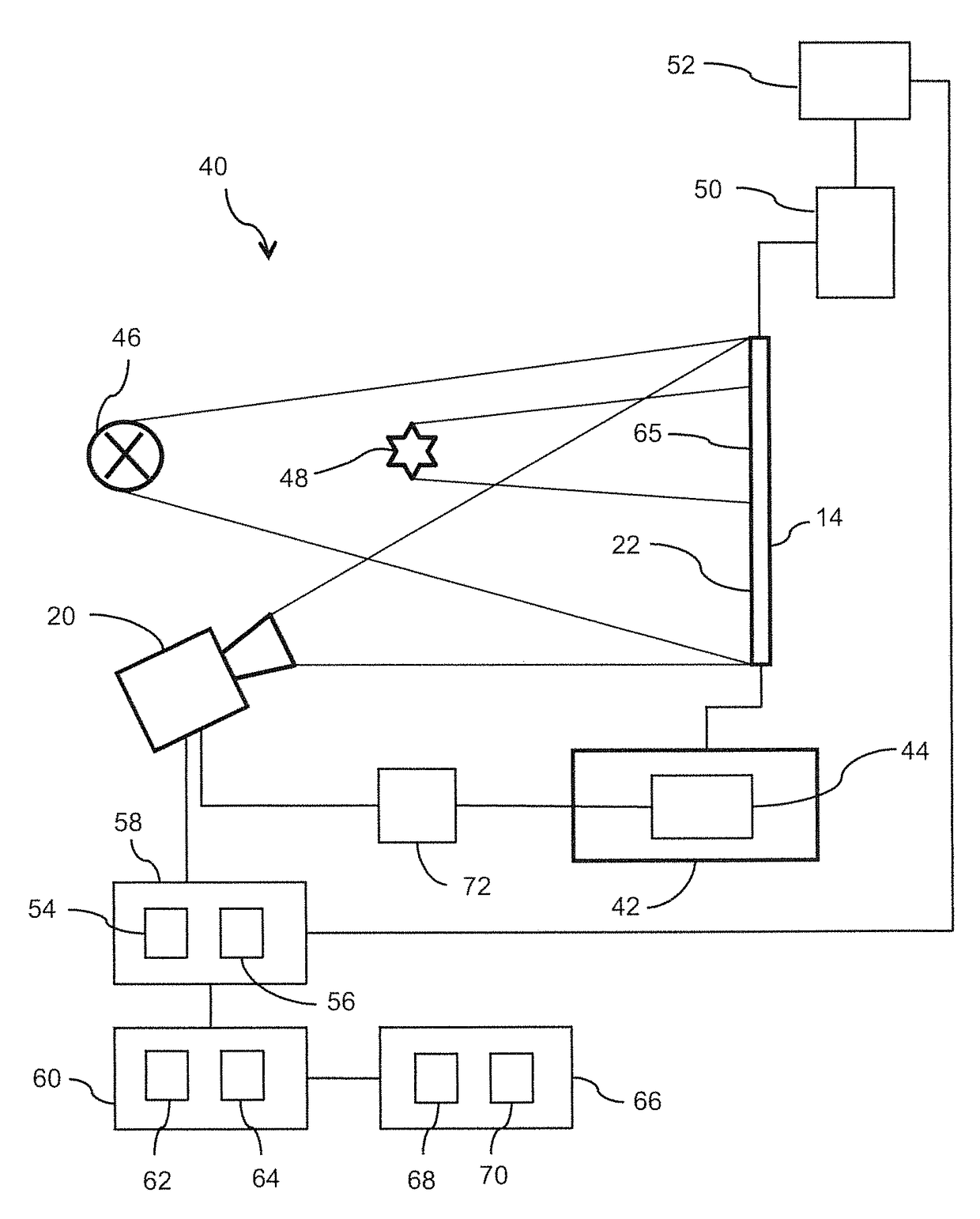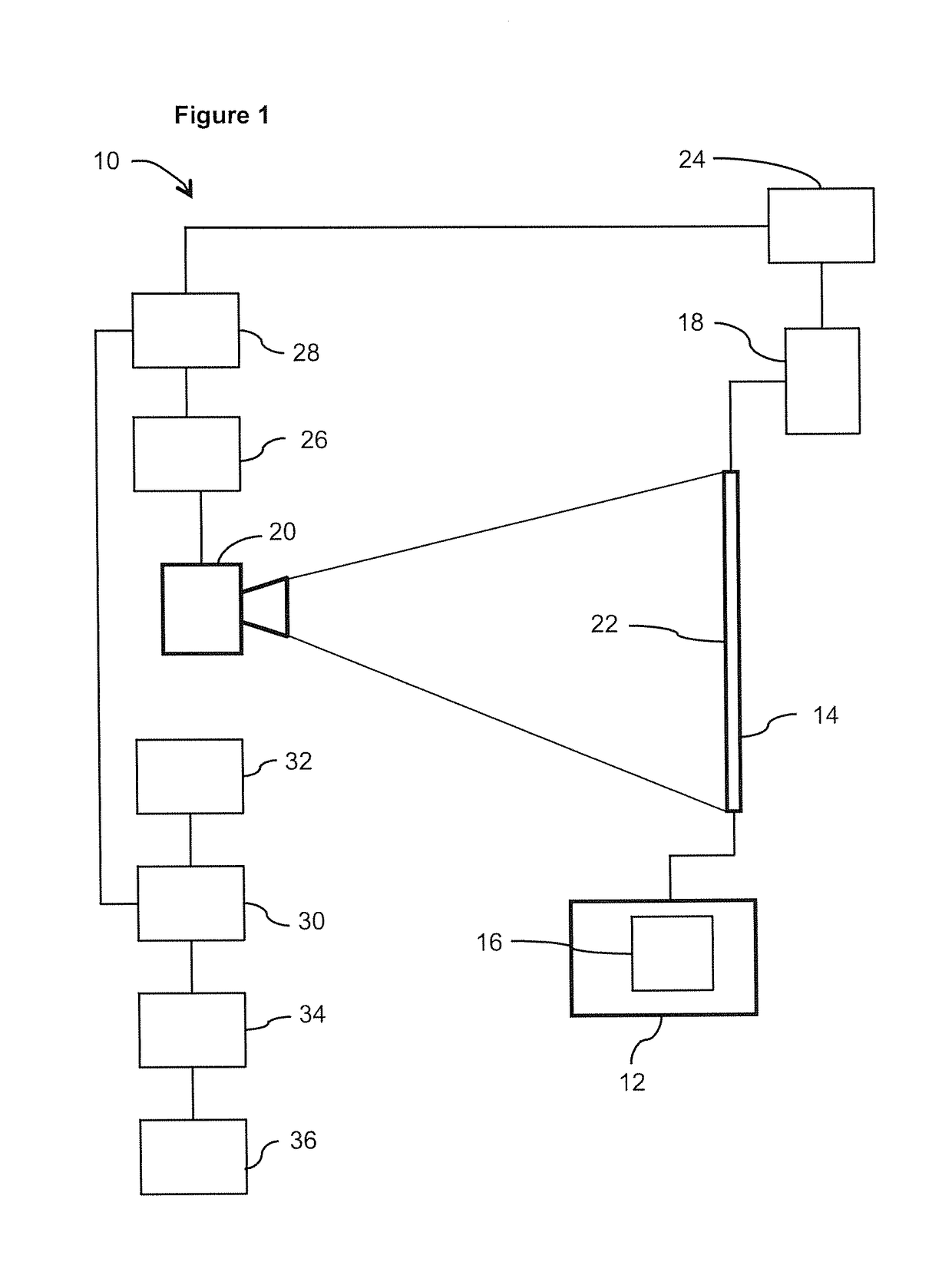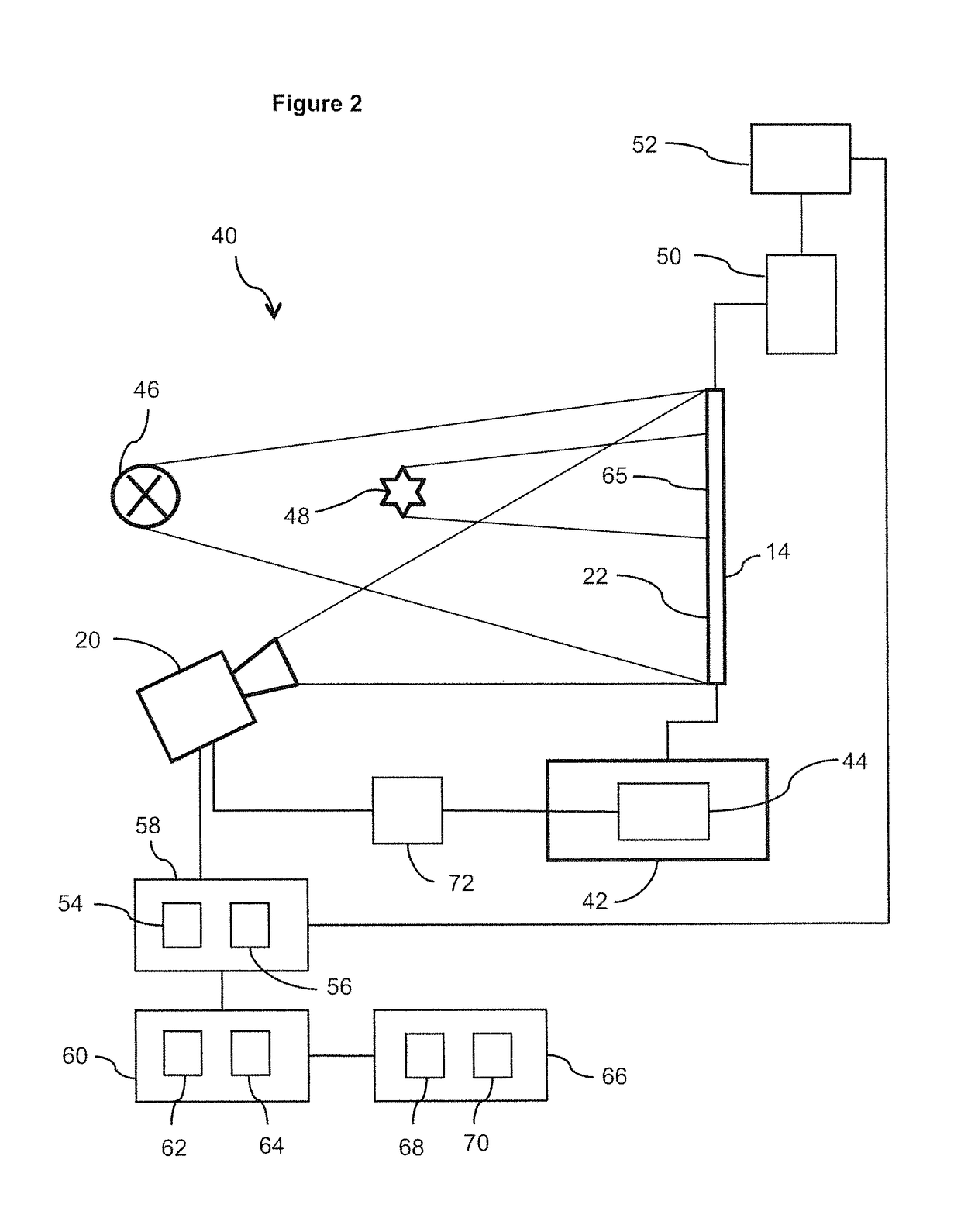Method and apparatus for measuring solar cells
a solar cell and measurement method technology, applied in photovoltaic energy generation, photovoltaic energy generation, renewable energy products, etc., can solve the problems of overheating of the solar cell, insufficient consideration of the amount of energy introduced into the shaded solar cell, and insufficient consideration of the amount of energy introduced into the solar cell, so as to avoid unnecessary wastage, substantial differences in input energy, and safe identification
- Summary
- Abstract
- Description
- Claims
- Application Information
AI Technical Summary
Benefits of technology
Problems solved by technology
Method used
Image
Examples
first embodiment
[0036]With reference to FIG. 1, an apparatus 10 for measuring solar cells is shown according to the present invention. The apparatus 10 comprises a voltage source 12 allowing a voltage U to be applied to a solar cell 14. The applied voltage U can have a value of, for example, between 0 V and −15 V. The voltage source 12 comprises a pulse generator 16 for generating and applying at least one voltage pulse to the solar cell 14. The at least one voltage pulse can be applied for a predeterminable period of time. Preferably, time periods of 1 ms to 40 ms, preferably 10 ms to 30 ms, particularly preferably 20 ms are used for one voltage pulse. Alternatively, the apparatus can also comprise a current source with a pulse generator for generating and applying at least one current pulse to the solar cell to be measured, the optionally predeterminable period of time being on the same scale as for a voltage pulse. Furthermore, the apparatus 10 comprises a current measuring apparatus 18 for meas...
second embodiment
[0043]FIG. 2 shows an apparatus 40 according to the present invention. In this apparatus 40, a current source 42 and a pulse generator 44 are used to generate and apply a current pulse at 8 A, for example, which corresponds to an operating current of 35 mA / cm2 in solar cells of the usual size, to the solar cell 14. A plurality of current pulses can also be applied to the solar cell 14. Additionally, the solar cell 14 is illuminated by an illuminating means 46, wherein only part of the solar cell 14 is illuminated due to a shading apparatus 48, simply shown as a shading object in the present case. Apart from simple shading objects, such as templates, suitable shading apparatuses are, for example, controllable shading apparatuses, such as described in DE 10 2011 052 047 A1. In alternative embodiments, no shading apparatus is provided, but only an illuminating means which illuminates the solar cell 14. A voltage U resulting in the solar cell 14 from the current pulse and the shaded ill...
PUM
 Login to View More
Login to View More Abstract
Description
Claims
Application Information
 Login to View More
Login to View More - R&D
- Intellectual Property
- Life Sciences
- Materials
- Tech Scout
- Unparalleled Data Quality
- Higher Quality Content
- 60% Fewer Hallucinations
Browse by: Latest US Patents, China's latest patents, Technical Efficacy Thesaurus, Application Domain, Technology Topic, Popular Technical Reports.
© 2025 PatSnap. All rights reserved.Legal|Privacy policy|Modern Slavery Act Transparency Statement|Sitemap|About US| Contact US: help@patsnap.com



